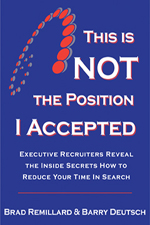Social Media Is Good and Bad For Your Job Search
At a recent Vistage meeting of about 20 CEOs we were discussing using social media as a way to find people. One of the CEOs indicated it is also a great way to eliminate people.
I wasn’t overly surprised to learn that many hadn’t thought about social media for hiring, but I was surprised to learn that many don’t use it as a screening tool. Obviously, after hearing the story from the one CEO, most will reconsider.
Apparently they were in the process of interviewing a candidate for a sales position, and like most hiring processes it takes a couple of weeks to get through all of the interviews. Over this couple of weeks the company started tracking this person’s Tweets on Twitter and looked up the candidate’s profile picture.
OOPS major faux pas.
Apparently as it was relayed in the meeting, this person’s picture was – let’s just say not professional, and the tweets were completely inappropriate as viewed by the company. The language was foul, the topics discussed rather vulgar, and for a professional sales person raised a lot of red flags.
The company was scared of a sexual harassment lawsuit and how this candidate would communicate with employees and customers. Not to mention what customers would think if they saw this person’s profile picture and followed them on Twitter.
Social media is a double edged sword. I follow Twitter on a regular basis, and I am surprised at how many people looking for a job use inappropriate language, brag about being lazy, tweet about how glad they are about not working, or demonstrate a lack of willingness to be employed. They come across as wanting a job but not willing to work. This is not what a future employer is seeking.
Take care to ensure that you manage your social media properly and professionally during your job search. Others are watching and listening to you.
If this was helpful to you, it will probably be helpful to others. Please consider passing it on so they too can benefit. You might add it to your Facebook page, update it on your LinkedIn status, email it to friends or to your network. We all need to help out. One tip can make a huge difference to someone.
Join our LinkedIn Job Search Networking Group and stay connected with the other 3500+ members. CLICK HERE to join.
We offer free recordings of our radio talk show heard every Monday at 11 AM PST on www.latalkradio.com. To listen to past shows on social media, resumes, interviewing, finding the hidden job market and common job search mistakes CLICK HERE to review our library. All are FREE to download.
I welcome your thoughts and comments.
Brad Remillard








